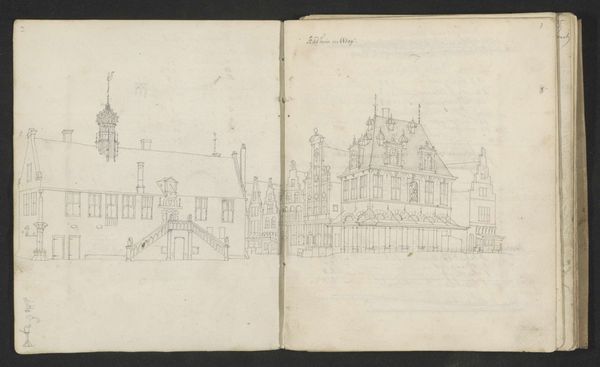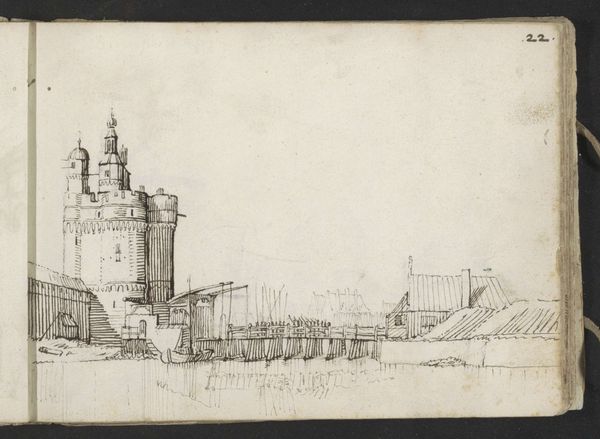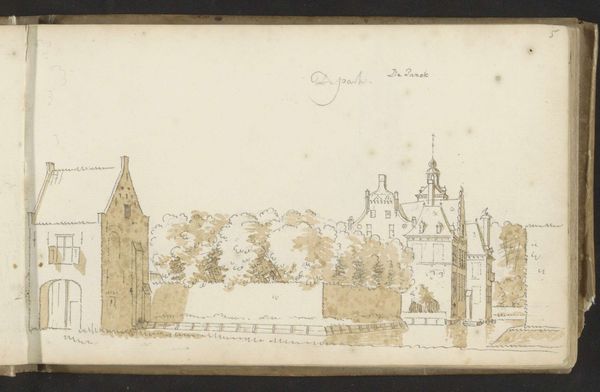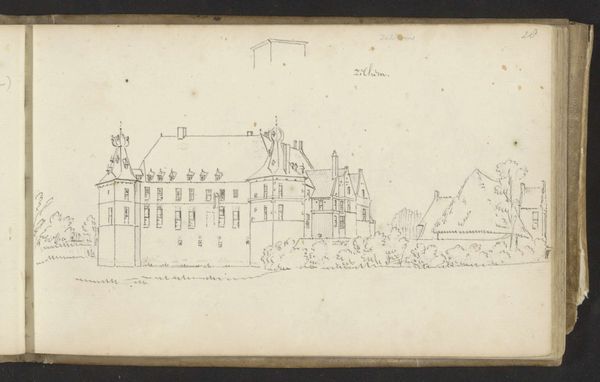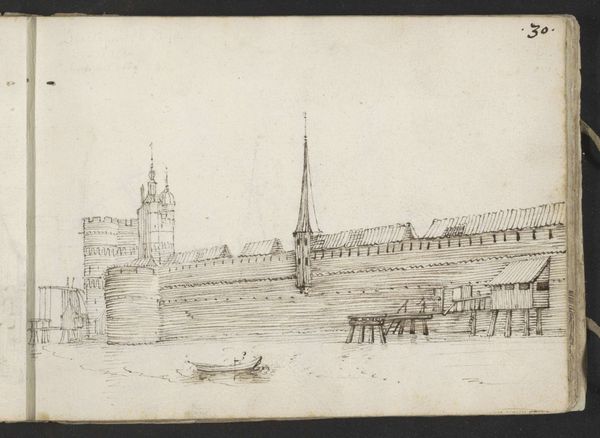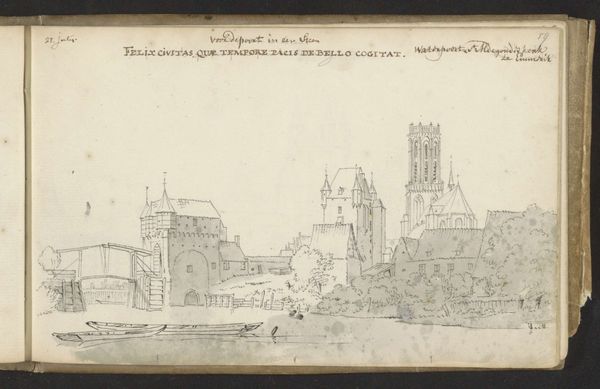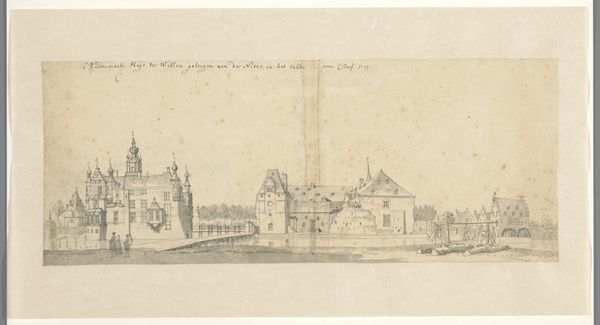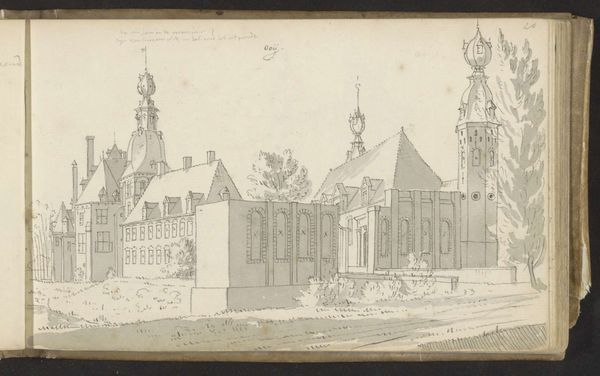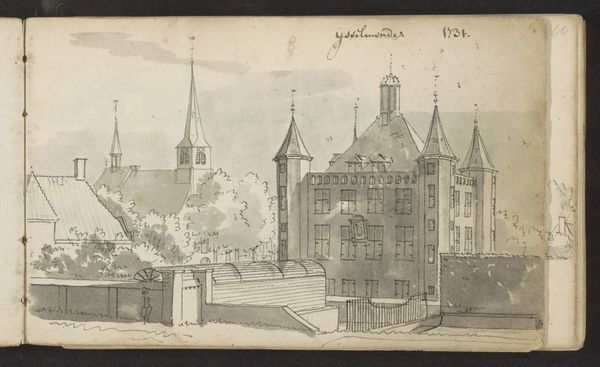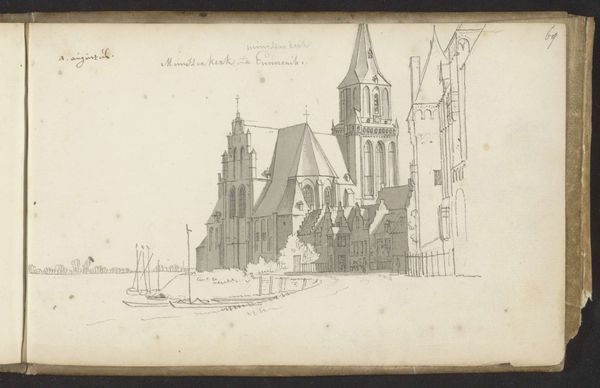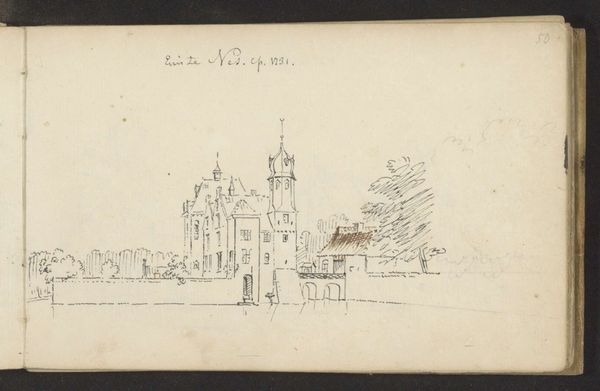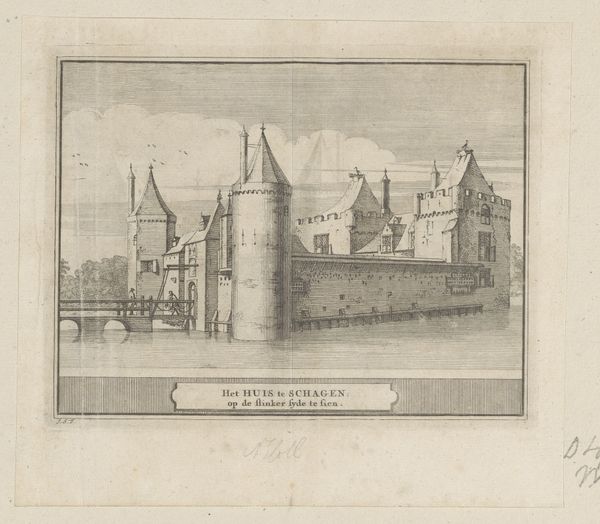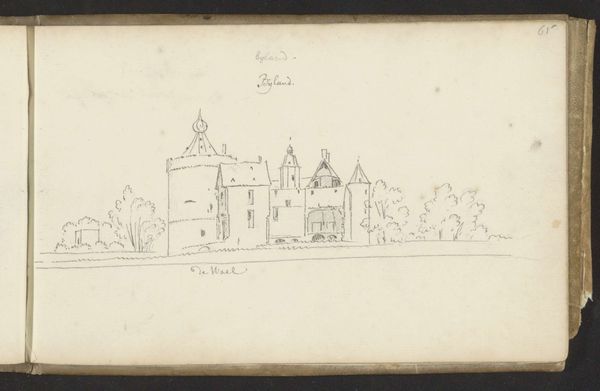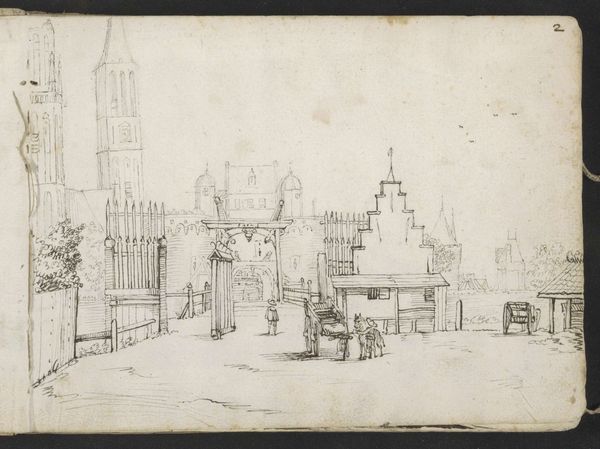
drawing, paper, ink, architecture
#
drawing
#
baroque
#
landscape
#
paper
#
ink
#
genre-painting
#
architecture
Copyright: Rijks Museum: Open Domain
Curator: This is "Kasteel Wissen en Oranjepoort te Wissen," a drawing rendered in ink on paper by Abraham de Haen the Younger, dating back to 1731. It’s held here at the Rijksmuseum. Editor: Wow, what a dreamy sketch! It's got this faded, antique map vibe. Like you found it tucked away in your eccentric aunt’s attic, and suddenly, you are whisked away on a baroque time-travel adventure. It gives me such wistful, storybook feels, it feels very much in passing, if that makes sense. Curator: That’s a keen observation. There is definitely a narrative quality to the composition, but also the artist used linear, clean and distinct lines as was typical of the Baroque style to carefully and deliberately illustrate the scene and project this sense of stability. It speaks to the way these structures became symbols of power. The architecture is front and center. Editor: Yes, that clarity totally underlines what you're saying. I also can't get over how simple the whole drawing is - a light and dark line! But still conveys so much. But this simplicity also helps with projecting the theme, you're spot on. A dream-like narrative combined with political commentary; such is art, my friend. It feels familiar, like other genre scenes of the time - maybe a conscious reflection of existing symbolism. Curator: You've touched on an important point. The choice of ink on paper speaks to the cultural continuity and its inherent fragility - the ephemeral quality contrasting with the enduring presence of the buildings, right? How, over time, cultures imbue places with a new significance. In other words, Haen is portraying literal structures with underlying ideological architecture. Editor: Precisely! Like these stones whispering tales of bygone eras. But that means our dear Abraham wasn’t merely drawing buildings; he was capturing…memory itself. Its own monument, how’s that? Curator: Indeed, a poignant snapshot in time, captured not just as visual record but as an encoding of memory. A way of thinking about culture. Editor: Totally, I now look at this drawing as the artist using Baroque art as both record keeping but more profoundly; thought. It’s truly beautiful and incredibly human.
Comments
No comments
Be the first to comment and join the conversation on the ultimate creative platform.
